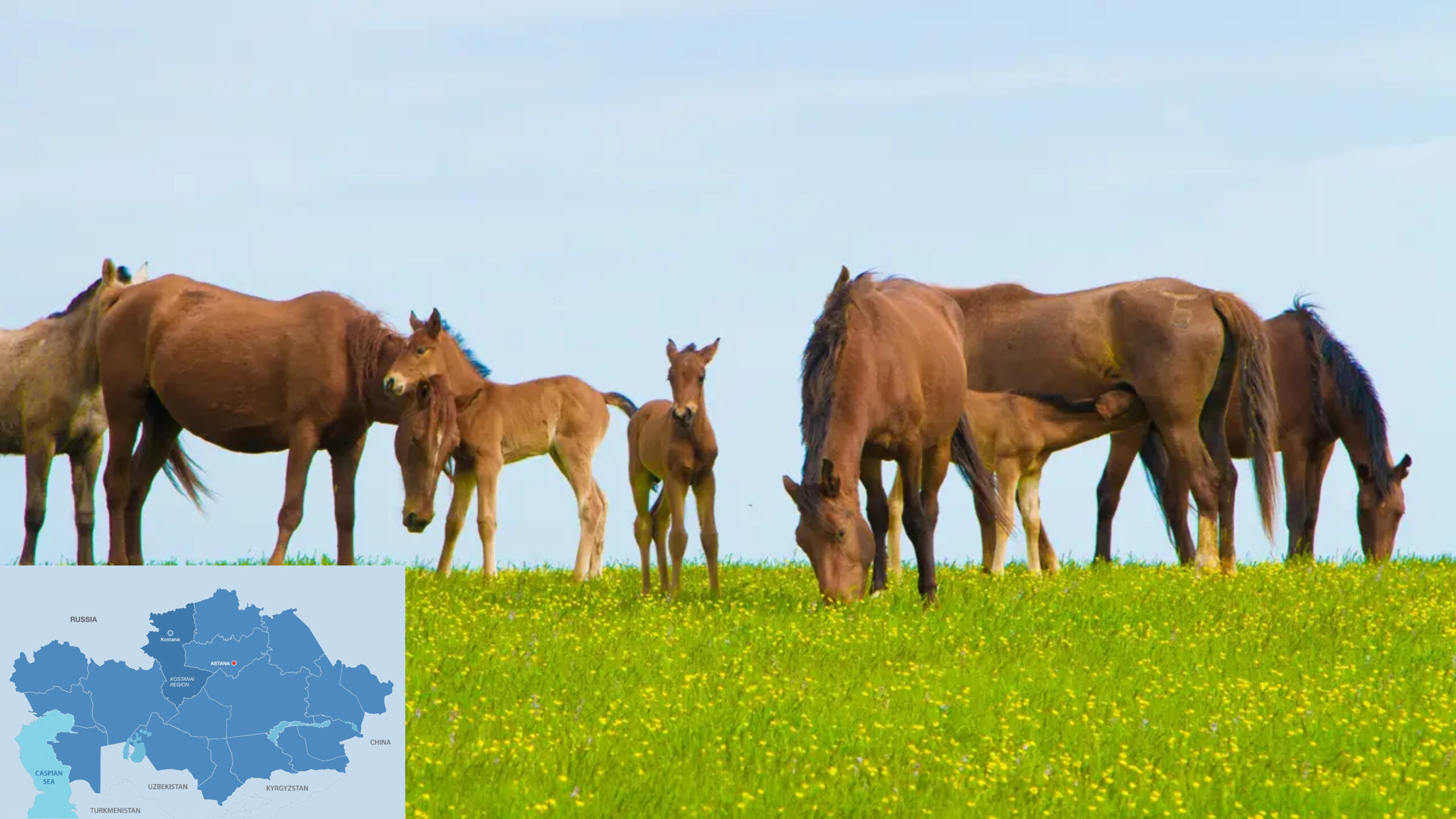ASTANA – Horse breeders in Kazakhstan are celebrating new amendments to the law on the preservation and reproduction of domestic horse breeds, signed by President Kassym-Jomart Tokayev on June 9, in a move to save the Kostanai horse breed.

Photo credit: Kazinform. Click to see the map in full size. The map is designed by The Astana Times.
In 1951, scientists introduced this new breed by crossing Kazakh mares with stallions from the Kalmyk, Don, Streletskaya, Orlovo-Rastonchinskaya, and Anglo-Arabian breeds. Kostanai breed horses are known for their exceptional strength and endurance, making them well-suited to traditional Kazakh sports such as kokpar (goat pulling). They also perform excellently in races and are well-adapted to Kazakhstan’s climate.
Leader of the Respublica party Aidarbek Khojanazarov has been an active proponent and powerful ally of horse conservation efforts. As the deputy of Mazhilis, the lower house of the Kazakh Parliament, he also helped to push the process forward in Parliament.
“The goal of the project is to restore the domestic sports horse breed and improve its breeding qualities by providing state support. The Kostanai breed is a Kazakh horse breed, a national treasure of the people, produced as a result of 70-year-long scientific research, and is widely used for the development of specialized sports and national equestrian sports,” Khojanazarov told Kazinform news agency.
Kazakhstan’s only Kostanai horse stud farm
A horse breeding industry emerged in the Kazak tulpary (Kazakh racehorse) stud farm, which opened in 1886. Now, the stock of the Kostanai breed is concentrated at this stud farm in the Kostanai Region.
According to Khojanazarov, over 44,000 Kostanai horse breeds were registered in the country in 1969, but after the farm lost state support in 2014, their numbers fell sharply due to insufficient financial backing. The breed is now on the brink of extinction, with an estimated 270 heads remaining.
The horse stud company has been racing against time to save Kazakhstan’s historical breed. In an interview with Baigenews last year, the head of the company, Aigul Amandykova, shared how the stud has struggled to stay afloat ever since the stop of government funding a decade ago.
“When I came here, there was already about 140 million tenge (US$292,000) of debt. Now it is even bigger. And it is vitally important for us now that the region supports the horse farm and the Ministry of Agriculture supports it with subsidies,” she said.
Kazak tulpary is the oldest stable in Kazakhstan, with over 135 years of history. The building and its premises need repair, along with financing to cover accommodation and daily care expenses.
Caring for dozens of horses costs 50-60 million tenge (US$100,000-125,000) annually. With around 28 employees, the center is constantly behind on rent, payroll, and other bills. Due to poor working conditions, there is a constant staff turnover. Considering the scarcity of skilled specialists in sport horse breeding, only enthusiasts are drawn to this field, as the salaries for trainers, jockeys, and stable workers are low.
The breeding process is not easy and involves identifying and selecting quality horses. Since the state funding was cut out, the mandatory breeding tests for sport horses have not been conducted at the stud farm. The tests are essential for selecting mares for the breeding stock and breeding stallions.
“Great emphasis should be placed on breeding, science, and the renewal of laboratories in biotechnology and genetics. At the very least, biotechnology should be restored because it is about reproduction. With proper feeding and care for the mares, the herd will increase. We can sell 20% of the young stock and provide for ourselves, but we need to get out of debt. Without funding, there will be no breeding or stud farm,” said Amandykova.
Kostanai breed’s role in supporting Kazakh traditional sports
The loss of the Kostanai horse breed would have stripped the Kazakh nation of its cultural nomadic emblem – the horses.
“This situation is one of the main inhibiting factors for the development of national equestrian sports,” Khojanazarov told Kazinform.
The adoption of the law will make it possible to subsidize the costs of purchasing breeding stallions of foreign selection, conducting selection and breeding, and will cover the horse maintenance costs.
“These support mechanisms create conditions for the development of domestic sports-oriented horse breeds and contribute to the mass development of national equestrian sports, such as baige [racing], kokpar, audaryspak [wrestling on horses], zhamby atu [horseback archery], tenge ilu [picking up coins on a horse],” said Khojanazarov.
“It is not for nothing that Kazakhs say that ‘the horse is the king of cattle.’ If we really want strong horses like Kabirkhan from our country to compete in big arenas, I ask for your support in this law,” he added.
Khojanazarov referred to Kazakhstan’s horse Kabirkhan, who became the highlight of the Meydan Racecourse by winning twice at the Al Maktoum Challenge tournament in Dubai in January. This earned Kabirkhan, a descendant of the famous California Chrom, a spot at the Dubai World Cup, one of the biggest events in horse racing.


